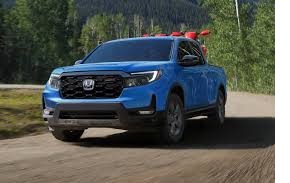Whether you are transporting livestock for a show, auction, or simply moving them from one location to another, having the right trailer size is crucial to ensure the safety and well-being of the animals. The size of the trailer you need will depend on several factors, including the type and number of animals you are transporting, as well as the distance and conditions of the journey. In this article, we will discuss the different trailer sizes available and how to determine the right size trailer for your livestock hauling needs.
- Types of Livestock Trailers
Before determining the size, it is essential to understand the different types of livestock trailers available on the market. There are primarily three types of trailers commonly used for hauling livestock: gooseneck trailers, bumper pull trailers, and semi-trailers.
- Gooseneck Trailers: These trailers attach to the bed of a pickup truck using a gooseneck hitch. They offer increased stability and weight-carrying capacity compared to bumper pull trailers. Gooseneck trailers are ideal for larger numbers or heavier livestock as they can handle greater weight loads.
- Bumper Pull Trailers: These trailers are attached to the hitch on the rear of the towing vehicle. They are suitable for smaller loads or shorter distances. Bumper pull trailers are typically less expensive and easier to maneuver than gooseneck trailers.
- Semi-Trailers: These trailers are designed for professional livestock haulers over long distances. Semi-trailers are much larger and require a specialized truck for towing. They have multiple compartments and high load-carrying capacity, making them suitable for larger herds or commercial livestock transportation.
- Considerations for Choosing the Right Size Trailer
Now that we have discussed the types of trailers available, it’s time to consider the factors that will help determine what size trailer you need for hauling your livestock:
- Number of Animals: The most obvious consideration when determining the size of the trailer is the number of animals you need to transport. You will want to ensure that there is enough space for all the animals to stand and move comfortably. It’s important to remember that animals need enough space to balance themselves during transportation to minimize stress and prevent injuries.
- Size of Animals: Different livestock species have varying sizes and dimensions. Consider the average size of your animals, including their height, length, and weight. Some livestock, such as horses or cattle, require taller trailers to accommodate their height, while others, like pigs or sheep, may need wider trailers to allow more space for movement.
- Length of Journey: The duration of the journey is another crucial factor to consider. Longer journeys require extra comfort and amenities for the animals, such as ventilation, bedding, and possibly water troughs. Taking breaks and providing appropriate rest periods can also affect the size requirements, especially if the animals will be standing for extended periods.
- Distances and Road Conditions: Consider the type of roads and terrain you will be traveling on. If you will be traveling mostly on highways, you may not need a trailer with off-road capabilities. However, if you will be navigating rough or uneven terrain, a trailer with better ground clearance and sturdy suspension is essential.
- Additional Equipment and Accessories: Depending on your specific needs, you may require additional equipment and accessories for your livestock trailer, such as a hayrack, tack storage, or divider gates to separate animals. These accessories will take up additional space, so be sure to account for them when determining the appropriate trailer size.
- Popular Trailer Sizes for Hauling Livestock
Trailers come in a wide range of sizes to accommodate different livestock hauling needs. Here are some of the popular trailer sizes commonly used for various livestock:
- 16 to 20 feet: This size range is suitable for small hauls or if you have a limited number of smaller-sized animals. These trailers are commonly used for hauling pigs, sheep, or smaller cattle. They are easy to maneuver and can be towed by most standard pickup trucks.
- 20 to 24 feet: Trailers in this size range offer a bit more space and are suitable for larger numbers of animals or slightly larger livestock. They provide more flexibility in terms of accommodating animals comfortably and allow for proper ventilation and movement during transportation.
- 24 to 30 feet: These trailers are ideal for larger livestock, such as horses or cattle. They offer ample space for taller and bulkier animals, allowing them to stand and move freely. You can also use these trailers to accommodate more animals comfortably.
- 30 feet and above: If you are transporting a significant number of animals or require a trailer with multiple compartments, you might need a trailer with a length of 30 feet or more. These trailers are generally used for commercial transportation or professional livestock hauling. They come with advanced features, such as hydraulic lifts, adjustable dividers, and enhanced ventilation, to ensure the safety and comfort of the animals during long journeys.
Remember, these sizes are just general guidelines, and your specific needs may vary depending on your individual circumstances. It’s always a good idea to consult with a reputable trailer dealer or an experienced livestock hauler to determine the most suitable trailer size for your specific requirements.
- General Tips for Livestock Transportation
In addition to choosing the right size trailer, there are a few general tips to keep in mind for safe and stress-free livestock transportation:
- Familiarize Animals: Before the journey, ensure that your animals are accustomed to being loaded and transported in trailers. Gradually introduce them to the trailer in a low-stress and positive manner. This will help reduce anxiety and the risk of injuries during the actual transportation.
- Adequate Ventilation: Proper ventilation is crucial to ensure the well-being of the animals. Make sure that the trailer has sufficient openings or windows to allow for air circulation. Additionally, consider installing fans or vents to provide additional airflow during hot weather conditions.
- Secure and Comfortable Flooring: The flooring of your livestock trailer should be slip-resistant and provide a comfortable surface for the animals. Rubber mats or wood planks can help prevent slips and falls during transit. Regularly clean and disinfect the flooring to maintain hygiene and minimize the risk of disease transmission.
- Check Local Regulations: Before hitting the road, familiarize yourself with local regulations and requirements for livestock transportation. Some jurisdictions have specific rules regarding trailer sizes, maximum load limits, and animal welfare standards. Adhering to these regulations is essential to ensure the safety of both the animals and the driver.
- Adequate Rest Stops: Plan your journey with regular rest stops to allow the animals to rest, rehydrate, and adjust their posture. Consider providing access to fresh water and offering appropriate feed during more extended journeys. Adequate rest stops will help prevent fatigue and minimize stress on the animals.
Why are 24′ stock trailers the preferred size?
After changing the ignition coil, it is recommended to perform a few additional steps to ensure that the vehicle is running properly:
- Check for any leaks or loose connections: Inspect the area around the ignition coil for any signs of oil or other fluids. Also, check all the connections to ensure they are secure and tight.
- Start the engine: Start the engine and listen for any abnormal noises or vibrations. Pay attention to the idle speed and how the engine responds to throttle inputs.
- Test drive the vehicle: Take the vehicle for a test drive to ensure that it accelerates smoothly, has good power, and doesn’t experience any misfires or hesitation during driving.
- Monitor the check engine light: If the check engine light was on before the coil replacement, check if it goes off after the replacement. If it persists or comes back on, it is advisable to have the vehicle scanned for any potential diagnostic codes.
- Perform a diagnostic scan: If the check engine light is still on, or if there are any concerns about the performance of the vehicle after changing the ignition coil, it is recommended to have a diagnostic scan performed. This will help identify any other issues that may be affecting the vehicle’s performance.
By following these steps, you can ensure that the new ignition coil is functioning properly and that the vehicle is running smoothly. If any issues persist, it is advisable to consult a professional mechanic for further diagnosis and repairs.
Related posts:
Why does a car shake after changing the ignition coil?
Will the AA carry coil packs for my A4?
What size trailer do I need to haul a stock? – Conclusion.
In conclusion, choosing the right trailer size for hauling livestock is crucial to ensure their safety, comfort, and welfare during transportation. Consider factors such as the number and size of animals, journey duration, road conditions, and any additional equipment or accessories you may need. By taking these factors into account and following general best practices for livestock transportation, you can ensure a successful and stress-free journey for both you and your animals.



